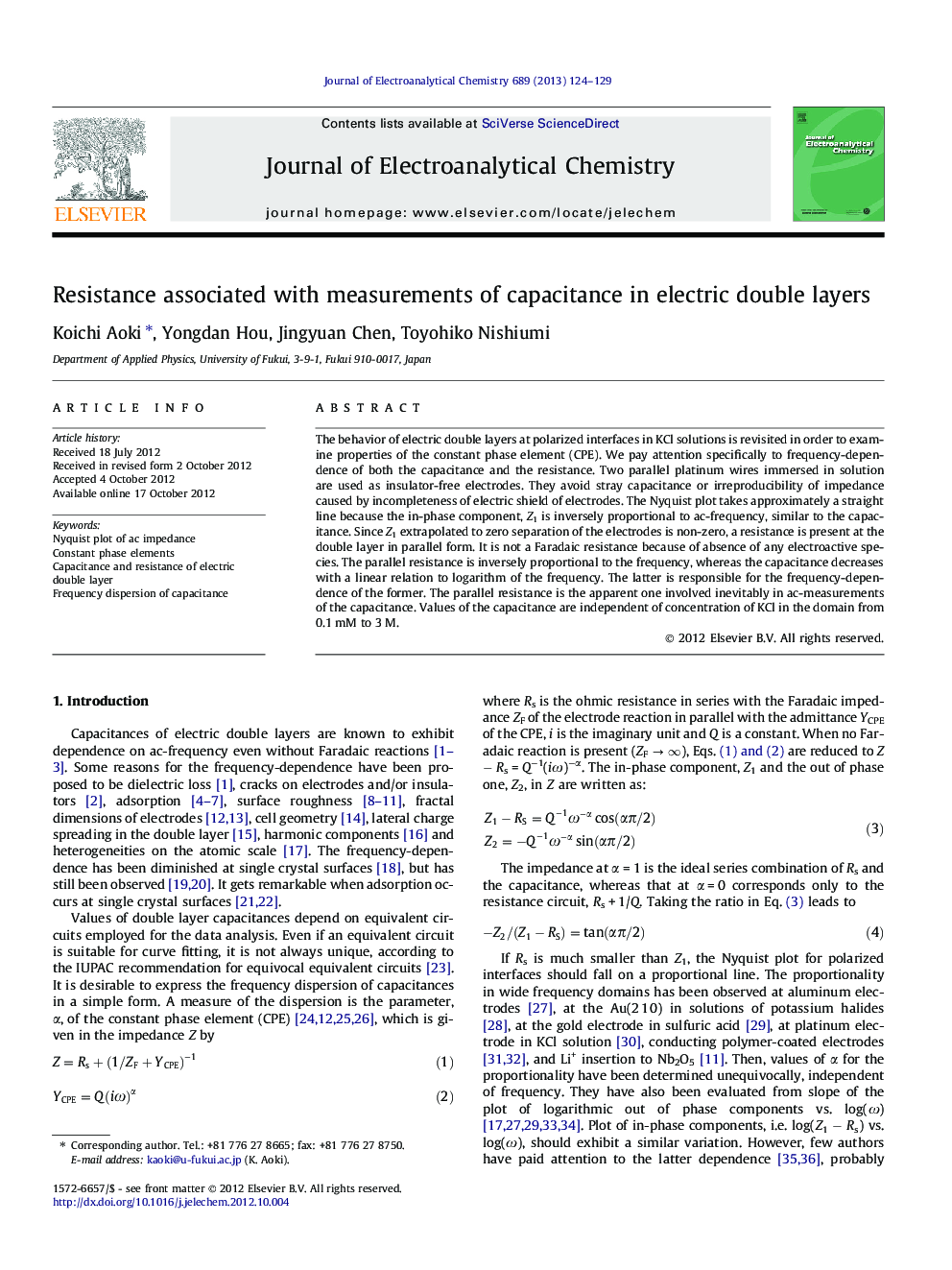| کد مقاله | کد نشریه | سال انتشار | مقاله انگلیسی | نسخه تمام متن |
|---|---|---|---|---|
| 219160 | 463251 | 2013 | 6 صفحه PDF | دانلود رایگان |

The behavior of electric double layers at polarized interfaces in KCl solutions is revisited in order to examine properties of the constant phase element (CPE). We pay attention specifically to frequency-dependence of both the capacitance and the resistance. Two parallel platinum wires immersed in solution are used as insulator-free electrodes. They avoid stray capacitance or irreproducibility of impedance caused by incompleteness of electric shield of electrodes. The Nyquist plot takes approximately a straight line because the in-phase component, Z1 is inversely proportional to ac-frequency, similar to the capacitance. Since Z1 extrapolated to zero separation of the electrodes is non-zero, a resistance is present at the double layer in parallel form. It is not a Faradaic resistance because of absence of any electroactive species. The parallel resistance is inversely proportional to the frequency, whereas the capacitance decreases with a linear relation to logarithm of the frequency. The latter is responsible for the frequency-dependence of the former. The parallel resistance is the apparent one involved inevitably in ac-measurements of the capacitance. Values of the capacitance are independent of concentration of KCl in the domain from 0.1 mM to 3 M.
Inevitable breakdown measurements of impedance.Figure optionsDownload as PowerPoint slideHighlights
► Electric double layer includes apparent resistance provoked by measurements.
► The capacitors were independent of concentrations of KCl.
► Two parallel Pt wires were used as insulator-free electrodes.
Journal: Journal of Electroanalytical Chemistry - Volume 689, 15 January 2013, Pages 124–129